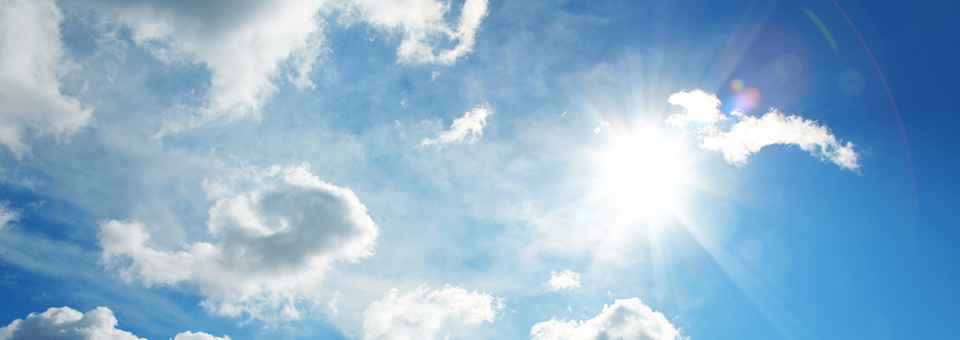The “sun police” always warn you of the cancer dangers you face every time you step outside without long sleeves, a hat, and your body slathered in sunscreen.
Of course, this is ridiculous. And for years I’ve been reminding my patients that getting natural vitamin D from the sun is one of the best all-around cancer-fighters..
A new study confirms…
Spending Time Outdoors LOWERS Your Risk of Cancer
According to this latest study, researchers report that spending 20 years or more working outside in the sun actually REDUCED a woman’s risk of developing breast cancer.1
Researchers looked at 38,375 women under the age of 70 who were diagnosed with the disease. Then they compared each patient to five control patients who were all born the same year.
Full employment history was reviewed. The researchers were stunned to find that not only was there no association with working outside in the sunlight to overall breast cancer risk…
But that long-term occupational exposure was associated with a 17% reduced risk of breast cancer after age 50.
These Danish scientists may have been surprised.
But I’m not.
In fact, studies show that the “sunshine” vita
min can:2,3,4,5,6- Target the genes responsible for cancer-cell proliferation
- Change cancer cells into normal cells
- Stop cancer cells from multiplying into tumors
- Help prevent certain cancers from spreading
- Regulate your immune response to cancer
- Prevent up to 17 different types of cancer, including prostate, bladder, uterine, and stomach
Vitamin D can even prolong the lives of existing cancer patients.
These findings from Denmark were published only a few weeks after another study looked at human migration over the last 500 years. This research, published by Oxford University, found that as people moved from areas of intense sunlight to regions where sunlight was low, the number of people with a vitamin D deficiency surged.7
In America, that number is almost 70%.8
In addition to cancer, a vitamin D deficiency increases your risk of heart attack, stroke, hypertension, diabetes, colds and viruses, depression, osteoporosis, and all-cause mortality.
To overcome a vitamin D shortfall and improve almost every aspect of health, I advise my patients to get plenty of sunshine.
To get the most vitamin D in the least amount of time, I recommend getting outside between 10 a.m. and 2 p.m.
That’s when the sun is highest and rays are strongest so you can get some good exposure over a short time. As little as 10 minutes in the midday sun can give you 10,000 IU of vitamin D.
Boost Your Cancer-Fighting D Levels
But sitting in the sun isn’t the only way to boost this vitamin… I also recommend that you:
- Eat sun-dried mushrooms. Next to sunlight, this is your best source of vitamin D. When shitake mushrooms are placed in the sun for six hours, their vitamin D levels skyrocket – from 110 IU per 100 grams to 46,000!
- The best source of D after the sun. Next to sunlight, cod liver oil is the best source of vitamin D, providing 1,360 IUs in just a single teaspoon per day. If cod liver oil isn’t your thing, increase the amount of wild-caught fatty fish you eat. Salmon, tuna, herring, and anchovies are good sources.
- Don’t skip the yolk. But do choose pasture-raised eggs. Compared to conventionally raised chickens, eggs from free range chickens have four times more vitamin D.
- D3 Power in a Pill. Choose a vitamin D3 supplement called cholecalciferol, which is identical to the vitamin D3 that your body produces. Be sure to avoid the synthetic, less potent and less absorbable vitamin D2 form you find in many multivitamins. Get between 5,000 and 10,000 IUs a day.
[i] Pedersen J, et al. “Occupational exposure to solar ultraviolet B radiation and risk of subtypes of breast cancer in Danish women.” Occup Environ Med. 2021 Apr;78(4):286-292.
[ii] Johnson CS, et al. “Vitamin D-related therapies in prostate cancer.” Cancer Metastasis Rev. 2002;21(2):147-58.
[iii] Maruyama R, et al. “Comparative genome analysis identifies the vitamin D receptor gene as a direct target of p53-mediated transcriptional activation.” Cancer Res. 2006;66(9):4574-4583.
[iv] Aranow C. “Vitamin D and the immune system.” J Investig Med. 2011;59(6):881–886.
[v] Shokravi MT, et al. “Vitamin D inhibits angiogenesis in transgenic murine retinoblastoma.” Invest Ophthalmol Vis Sci. 1995;36(1):83-87.
[vi] Lappe JM, et al. “Vitamin D and calcium supplementation reduces cancer risk.” Am J Clin Nutr. 2007;85(6):1586-1591
[vii] Andersen T, et al. “Historical migration and contemporary health.” (https://academic.oup.com/journals/pages/open_access/funder_policies/chorus/standard_publication_model)
[viii] Tovey A. “Are we currently amid a vitamin D pandemic?” Vitamin D Council. November 18, 2016. Accessed May 14, 2018.

